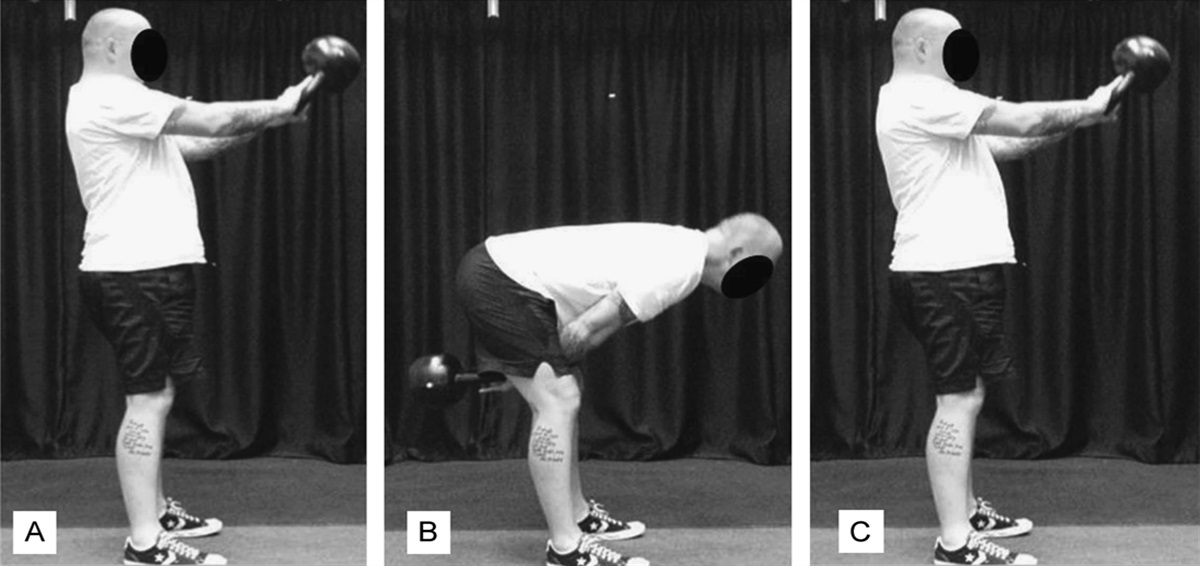barrak
Level 6 Valued Member
My guess is mass times acceleration.
Actually, mass times gravity is the static loading force, always pointing down.
mass times square of swing velocity divided by arm-bell lever is centrifugal force, always pointing along swing arm.
At bottom (probably fastest) position, they add up algebraically. A lazy swing will make the bell feel like 1.5 times its weight (1.5g).
S&S 2.0 book (p. 96) reports measured 10g swings with a 24K bell, making it feel like a static 240K weight!
Us mortals can probably muster 3-5g.
Those who do silly T-Rex swings stand to lose a lot of loading effect.

